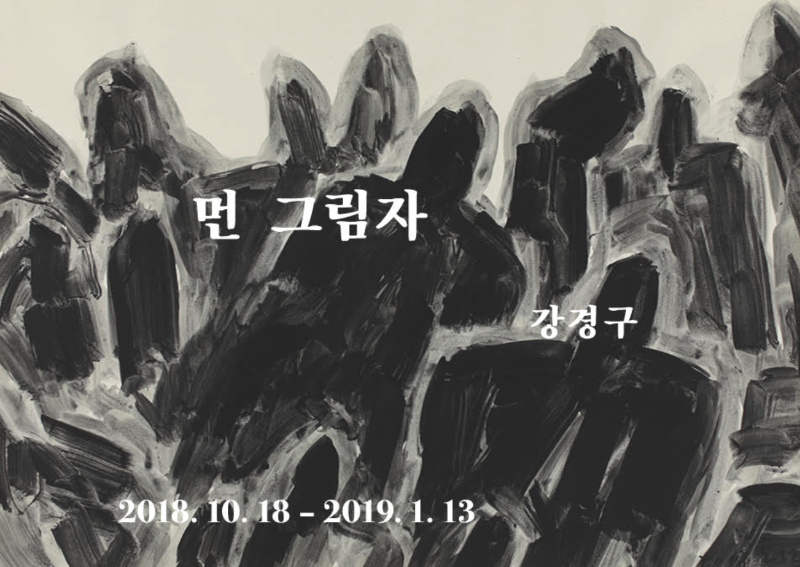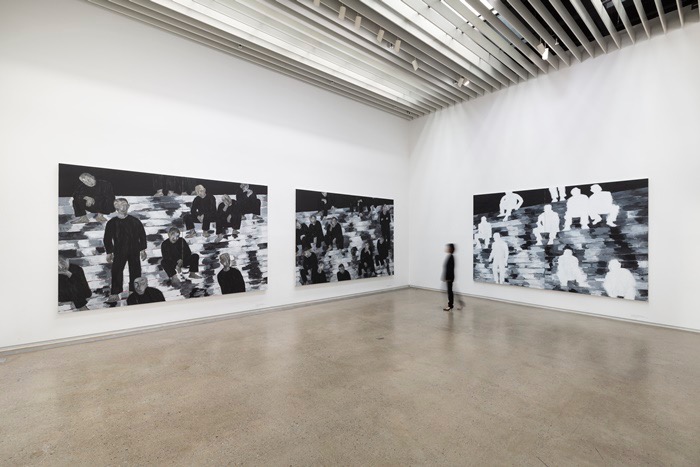
| Period| | 2018.10.18 - 2019.01.13 |
|---|---|
| Operating hours| | 평일 10:30~18:30 / 주말 10:30~19:00 |
| Space| | Art Center Whiteblock |
| Address| | 72, Heyrimaeul-gil, Tanhyeon-myeon, Paju-si, Gyeonggi-do, Republic of Korea |
| Closed| | Open throughout the year |
| Price| | |
| Phone| | 031-992-4400 |
| Web site| | 홈페이지 바로가기 |
| Artist| |
|
정보수정요청



|
|
Exhibition Information



On the Opening of Shadow in the Distance: Kang Kyung Koo Solo Exhibition Art Center White Block has organized solo exhibitions of artists who have established solid oeuvres but have worked persistently rather than being content with their current status. The exhibitions have provided opportunities for spectators to take deep looks into their worlds of art. Following solo shows by Kim Gurim Phantasmagoria: The Journey of Kim Gurim 2012 in 2012, Historical Imagination: The King Danjong Stories by Seo Yong-sun in 2014, and Cha Myung Hi Toward the Forest, in 2017, this year Art Center White Block will present the solo exhibition of Kang Kyung Koo: Shadow in the Distance. The works to be shown in this exhibition are all new, produced by the artist over the past three years. During this period, small and large events, some with earthshaking impacts, have occurred one after the other in Korean society. People were at a loss as they watched the Sewol ferry sink; citizens expressed fury at the existence of an individual who controlled the nation according to her personal desires; and victims of sexual violence, long silent due to shame and fear, began to make their voices heard. Masses of people gathered at Gwanghwamun Square with candles and made their voices heard. Many celebrities and politicians stood in court facing various charges. A new government came to power, and we now find ourselves in a situation where relations between North and South Korea are changing rapidly, beyond our predictions. Kang Kyung Koo’s solo exhibition Shadow in the Distance contains the deep sighs of the artist as he observes this society. The subjects the artist continuously paints include nature such as mountains, water and trees, and humans. His human figures, painted in vivid colors with simple brush strokes, cross waters that appear as seas, and stand proudly between sky and earth like giants. Such earlier images seemed only powerful. The humans appearing in his Shadow in the Distance series, which is also the title of this exhibition, likewise dominate the canvas with their enormous size, as in the case of his previous works. Nevertheless, they seem like weak and helpless beings against the surrounding water, trees and wind. The group of people gathered in twos and threes on stairs in the River That Does Not Flow series appear lethargic in particular. The steps on which they are gathered remind us right away of the steps in front of the Sejong Center for the Performing Arts at Gwanghwamun Square—the venue of the candlelight protests that shook the political topology of the nation. Many people gathered there for change, raising their voices with candles in hand. The people standing on the steps are gathered in twos and threes, unable to ascend or descend. They are close to one another, yet seem unaware of the others’ existence, let alone relying on each other; their shoulders are drooping. It is a group portrait of people in disappointment and despair, immersed in problems that are not easily solved however one may shout, in a society where communication is failing, and where ideological bipolarization is intensifying. Such group figure images continue in the series Cry, Cry. This work, in which the figures look like human figures, strange rocks or mountains, was based on plants the artist discovered on the banks of the Han River. In the piles of strange creeping vines growing along the riverbanks, the artist saw the image of humans, entangled with one another and unable to move. Hence, Kang Kyung Koo does not see our society from a utopian viewpoint. Rather, he suggests we look squarely at the cold reality. Visible in his drawings, the structures that look as if they may crumble down at any moment, and the human figures that can barely be seen between the crookedly stacked buildings, represent the reality of our society and the image of us living that reality, seen through the artist’s eyes. Like the old Goryeo Dynasty song Cheongsanbyeolgok, from which the artist appropriated the phrase “Cry, Cry” for his work title, and which expresses the feelings of the singer who wants to leave the secular world and live in the green mountains but cannot, when we stand before Kang’s works, we will not be able to ignore the reality of our society. Kang Sung-eun Chief Curator, Art Center White Block
